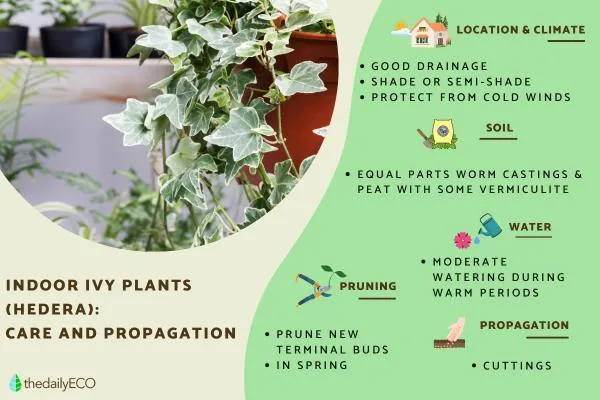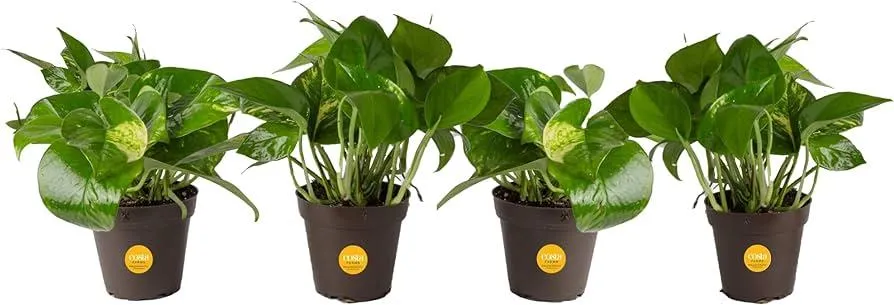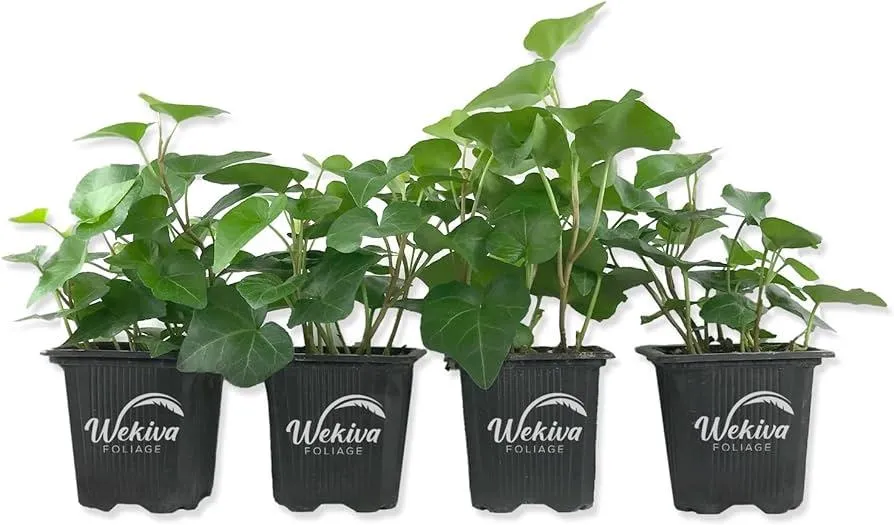A Comprehensive Guide to Caring for Ivy Plants Indoors
Thanks for your interest in keeping ivy plants indoors. As an avid gardener with over 15 years of experience caring for all types of houseplants, I’d be happy to share what I’ve learned about giving ivy plants the TLC they need to thrive inside your home.
Selecting the Right Ivy Variety
The first step is choosing an ivy variety suited to indoor conditions. Some top options include:
- English ivy (Hedera helix): Tolerates low light and thrives in spots near windows. A classic favorite that’s fairly easy to care for.
- Swedish ivy (Plectranthus australis): Beautiful trailing foliage that does well in bright, indirect light. Fun frilly leaves give it lots of visual appeal.
- Needlepoint ivy (Hedera helix ‘Needlepoint’): Compact form of English ivy with delicate pointed leaves. Ideal for small spaces or tabletop containers.
Remember that climbing ivies like Baltic or aluminum plant ivies will require support structures to scramble up as they grow.
Light and Temperature Needs
When it comes to lighting, ivies can tolerate low light levels better than other houseplants. They’ll thrive in places that get bright, indirect sunlight for several hours daily. However, too little light may cause leaves to yellow.
Ivies prefer average indoor temperatures between 60-75°F. Drafty spots or drafts from heating/AC vents can cause leaf drop, so give your plant some insulation from direct airflow.

Watering and Humidity
From my experience, under-watering is a more common problem for indoor ivies than over-watering. Feel the top 1-2 inches of soil before watering—it should be dry, not soggy. Then give the plant a thorough soak until water drains from the drainage holes.
Mist leaves regularly to boost humidity levels around 50-60%. Climbing types especially need moisture in the air to prevent leaf crisping at the edges. Pebble trays or a humidifier can help if the air in your home tends to be dry.
Fertilizing Schedule
During the spring and summer growing seasons, use a diluted liquid houseplant fertilizer every 2-4 weeks. I like to go with a water-soluble product that’s labeled for foliage plants. In fall and winter when growth slows, cut back to fertilizing monthly.
Pruning and Training
Ivies are pretty low maintenance but may need occasional pruning or training if you want them to fill out a specific space. You can shape or encourage growth by pinning stems along trellises or wires. Cut back leggy stems by 1/3 using clean pruning shears.
For climbing varieties, gently tie vines to supports with soft twine as they grow longer. Be careful not to pull stems too tightly—let them have space to develop along the structure naturally.

Pests and Disease Problems
Fortunately, ivies generally stay pretty healthy indoors. But like any plant, issues can crop up now and then. Watch out for signs of pests like spider mites or mealybugs which suck plant sap and spread disease. Isolate the plant immediately if spots or webbing appear.
Treat with neem oil, insecticidal soap or a last resort miticide/insecticide according to label directions. Remove any affected leaves. Improve air circulation and cut back on fertilizer if foliage yellows or tips dry out—this may signal overwatering.
Propagation and Dividing
Ivies are very easy to propagate from cuttings for creating new plants. Simply remove 4-6 inch stem cuttings in early spring or summer, strip lower leaves, and place the stems in water. Roots will form within 4-6 weeks. Pot up rooted cuttings in potting soil.
You can also divide mature plants in spring by teasing roots and crowns apart with your hands. Replant divisions at the same soil level and keep evenly moist as new roots develop.
Final Thoughts
In summary, while not the fastest growing houseplant, ivy is a tough, attractive choice that can thrive with basic care. It’s kind of amazing how resilient these plants are despite occasional mishaps we all experience as plant parents. With the right growing conditions and TLC, your ivy should reward you with lush foliage for years. Let me know if you have any other questions!

I hope this guide helped give you a solid grounding in all the aspects of indoor ivy care. From selecting varieties to watering, light needs and problem solving, my goal was to anticipate the typical concerns people have when bringing these vines indoors. Please feel free to reach out if any other details would be useful! Wishing you the best of luck nurturing your new leafy friend.
Indoor Ivy Care Requirements
| Water | Light | Soil | Temperature | Pruning |
|---|---|---|---|---|
| Water when top inch of soil is dry. Avoid soggy soil. | Bright, indirect light. Keeps leaves green. | Well-draining potting mix. Moist but not soggy. | 50-80°F. Avoid drafty spots or near heat. | Trim as needed to control size or shape. |
| Allow soil to dry between waterings. | East or west-facing window best. | Pot with drainage holes. Terracotta dries out fast. | Foliage may drop in low light or temps below 50°F. | Cut off vines that grow too long or wander. |
| Mist leaves to increase humidity. | At least 4 hours of indirect light daily. | Amend soil with compost for nutrients. | Leaf drop or browning means too dry, wet or cold. | Prune or shape vines to control growth habit. |
FAQ
-
How do I water an ivy plant indoors?
Basically, you need to water ivy plants when the top inch or so of soil looks dry. It’s better to water thoroughly when the soil is dry than to sprinkle small amounts of water every day. However, don’t let the plant sit in soaked soil for a long time either.
-
What kind of light does ivy need indoors?
Ivy plants basically do well in medium to low light. They can tolerate quite a bit of shade, which is why they are a good choice for indoor spaces that don’t get much direct sunlight every day. Nevertheless, ivy will grow faster and fuller if you place it in a spot with bright, indirect light. On the other hand, too much direct sun can burn the leaves.
-
How often should I fertilize an indoor ivy plant?
You don’t have to fertilize an ivy plant very often when it’s grown indoors. Perhaps once every few months during the active growing season should be sufficient. Using a diluted liquid houseplant fertilizer according to package instructions is best. But is over-fertilizing really worth it if you just want the ivy to look nice?
-
How do I get my ivy to grow fuller?
To get your ivy looking amazing and bushy, give it plenty of sunlight and keep the soil slightly moist. Also, you can trim it back periodically to encourage new growth, or plant multiple small ivy cuttings close together to fill out the pot more quickly. Supposedly, rotating the plant occasionally can also make it grow in a rounder shape. Does that even work? I’m not certain, but it’s worth a try!

-
My ivy leaves are turning yellow—what’s wrong?
Yellow leaves on an ivy plant indoors often mean it’s not getting enough sunlight or its soil has dried out. Under-watering or over-watering can also cause leaf yellowing. As a botanist, I’d check the light, moisture level, and drainage. If the troubleshooting doesn’t help, it’s possible the ivy has a pest or nutritional problem. You might want to isolate it and examine closely for bugs, or try a balanced houseplant fertilizer. I hope the stunning ivy recovers soon!
-
How do I get my ivy to grow long vines?
To get your ivy growing long, winding vines that could put some jungle gyms to shame, give it something to climb. You can tie, twist or train the stems around a moss pole or let it cascade down from a hanging basket. The ivy will basically send out long tendrilsreaching for the sky as it looks for supports. Make sure to provide hints sunlight and keep the soil evenly moist too. Before you know it, your ivy will be draping fabulously!
